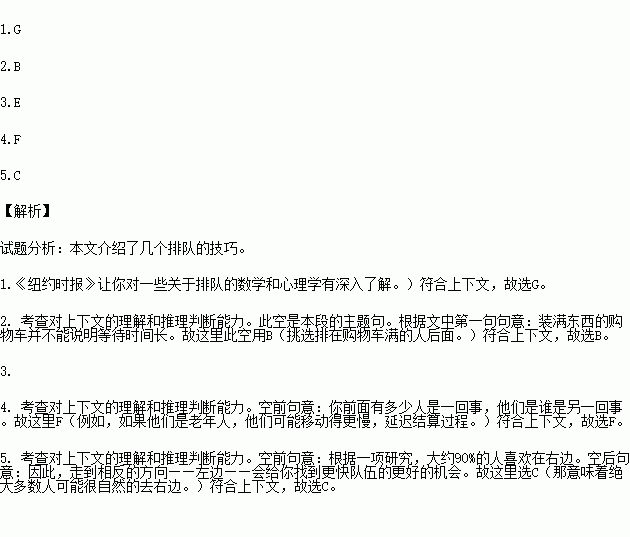题目内容
根据短文内容,从短文后的选项中选出能填入空白处的最佳选项。选项中有两项为多余选项。
Tips for waiting in line
We’ve all been there — when lining up at the supermarket checkout counter, the lines next to us always seem to be moving faster than the one we are standing in. 1. . It has also offered tips on picking the fastest line.
●2.
A cart (购物车) full of items doesn’t tell the whole story. Every person requires a fixed amount of time to say hello, pay, say goodbye and clear out of the lane. And that amount of time is an average of 41 seconds per person. 3. . This means if there are five people ahead of you, each with 10 items in their carts, the waiting time will be 355 seconds. But if there is only one person ahead of you, with 50 items in the cart, the waiting time is 191 seconds. You do the math.
● Study the customers
How many people are ahead of you is one thing, and who they are is another. 4. The items in their carts are also important. For example, four bottles of the same milk will definitely go faster than four completely different items.
● Go left
According to a research, around 90 percent of people are right-handed. 5. . So heading to the opposite direction — left — will give you a better chance of finding a faster line.
A. Choose a “snaky line”
B. Pick someone with a full cart
C. It means a majority of people tend to naturally go to the right
D. The person at the head of the line goes to the next available counter
E. On the other hand, the time that each item takes to be rung up is only three seconds
F. For example, if they are old people, they tend to move slower and delay the checkout process
G. Now The New York Times gives you some deep understanding into the math and psychology of queuing

